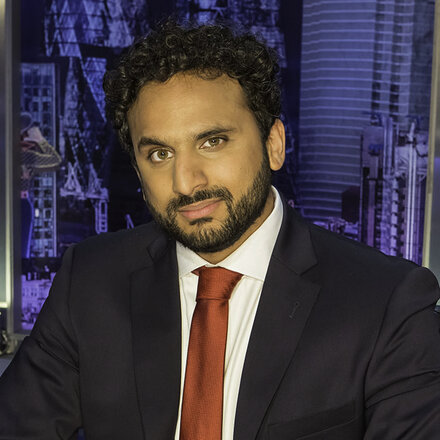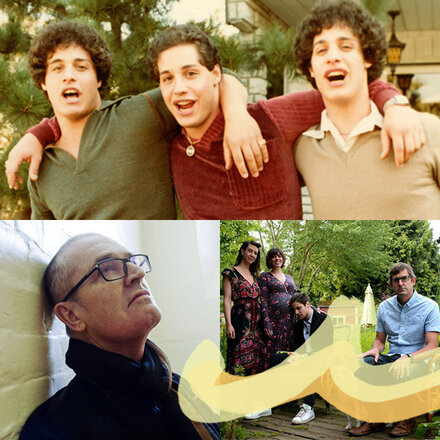
Eran Creevy: Interview
Shifty and Welcome to the Punch director Eran Creevy on leaping from a budget of £100k to £5.2 million, getting Ridley Scott to pick up the phone and what it takes to make him angry on set.
Published 15 March 2013.
Words by Quentin Falk
With its glossy cityscapes, screeching vehicle chases and noisy gun battles, Eran Creevy’s spectacular follow-up to his award-winning first feature Shifty also shapes as a major career shift in scale and ambition.
But despite the “heightened” subject matter and an increased budget, from a paltry £100,000 to £5.2 million, Creevy insists that his enigmatically-titled Welcome to the Punch has been crafted with much the same disciplined “skillset” – as he calls it – that defined Shifty and earned him an Outstanding Debut BAFTA nomination.
Shifty, inspired by events in Creevy’s life growing up in Harlow, Essex, revolves around the renewed and increasingly dangerous friendship between two former childhood buddies (Daniel Mays and Riz Ahmed), one of whom has become a rather hapless neighbourhood drug dealer.
Financed by the then-groundbreaking Film London Microwave scheme, which challenged London-based filmmakers to shoot a complete full-length film on a maximum budget of £100,000, Shifty was filmed in 18 days on 17 locations within five minutes of the production base at Elstree Studios.
“After Shifty was released and critically well-received,” Creevy, 36, recalls, “I sat down and thought, ‘What genres do I like, what movies do I like going to see and what sort of movie would I like to make as a genre buff?’ I knew I didn’t want to make another realistic social drama.” Which was just the kind of project that, predictably, came hurtling in abundance through the letterbox after the success of Shifty.
To “keep the wolf from the door”, he continued to hone his craft with music promos (Take That, Utah Saints, Ministry of Sound) and commercials (Coca-Cola, Nike). Meanwhile, still in collaboration with his Shifty producers Ben Pugh and Rory Aitken and cinematographer Ed Wild, he began to pen Welcome to the Punch, a big-scale cops-and-robbers thriller.
Much like another “genre geek”, Quentin Tarantino, Creevy’s film ‘school’ was his stepfather’s video store where he’d disappear into the basement and watch films by Michael Mann and the Scott brothers, as well as the best of Hong Kong and Korean cinema.
Of those celluloid roots, Creevy notes: “No one should underestimate the power of learning the craft just by watching a lot of movies.” He would later find work as a runner and assistant director on films including Layer Cake, Wimbledon and Woody Allen’s Scoop: “You suddenly realise that your heroes are just flesh and blood, and are also winging it as much as you are likely to be while making a film.”
“No one should underestimate the power of learning the craft just by watching a lot of movies.”
“I would study action sequences, even boarding some out to a degree and then watch carefully how they were cut together. Sometimes I’d even watch them with the sound off, taken down to the bare elements, as it were.” How fitting then that, years later, who should come riding to his assistance as Creevy carefully ‘prepped’ his second feature but Hollywood director/producer Ridley Scott.
“We did obtain some financing from America but I was having problems getting real traction on the project. After all, I was just a director who’d made a 100 grand movie. We needed an executive producer who could lend a bit of weight and heard that [Ridley Scott’s production company] Scott Free were actually looking for London-based action movies. I sent my script to Liza Marshall and she sent it on to Ridley. I was very nervous meeting one of my heroes but he was incredibly warm. ‘Let’s get this film made,’ he said, and once he began to pick up the phone, things started to happen.
“There was a huge cachet having his named attached to the project, and having him champion me helped with getting a cast like James McAvoy, Mark Strong and Andrea Riseborough. Having Ridley’s name on the letter that went out definitely made a difference.”
The collaboration didn’t end there. “He was very also involved in the script development and I’d probably meet up with him or via email maybe once every two weeks. As he was then shooting Prometheus while we were shooting Punch, we were left pretty much to our own devices but he somehow still managed to watch our rushes very night. He then became much more involved again in the editing process, giving us useful notes from time to time on how to streamline things. It made me realise - that’s why he’s Ridley Scott!”
Creevy explains how Scott also instilled in him some of the same kind of disciplines that had characterised Shifty, albeit on a much bigger-scale production. Emphasis was placed on maximising the use of locations, which included in and around Canary Wharf, the St Botolph Building and, doubling for a key Iceland sequence, a private logging forest near Guildford, Surrey (with a craftily added CGI mountain backdrop).
“We based ourselves out of 3 Mills Studios at Bow and most of the locations were probably within a half hour drive. We had seven weeks to shoot the film – probably half of what you’d have for this type of American movie – at the same time trying to achieve a £15-20 million ‘look’. Working within a budget creates its own kind of discipline.”
Not that these kind of strictures weren’t without their occasional headaches. Asked to name the “hardest” scene he’s ever had to tackle, Creevy names a dramatic sequence early on in Welcome to the Punch where we first see a key character on a plane, bleeding badly. The plane lands and he leaps out onto the runway, pursued by armed police.
“It may seem simple on camera,” Creevy sighs, “but we had to fly in a Boeing 737, with 100 extras on board, land it at Farnborough (doubling for London City airport) and we also had to have a huge wet-down of the runway. And we only had a day in which to do the whole thing. I found it extremely stressful trying to figure out the basic components that would make that scene work; it had to be so stripped down. I remember getting quite angry and shouty on set, which is not necessarily my style. When we wrapped that day, I literally threw down my loudhailer, walked off the set and into my car and went straight home.”
“Rehearse the scene until you are just about happy with it, but not absolutely. The actors need to get it perfect on set.”
Memories of that are somewhat leavened when then asked to recall a scene of which he’s proudest. That would, says Creevy, be in Shifty, and centres on a car park sequence between Mays’ rough, innocent character and Jason Flemyng, as a sinister senior cocaine dealer.
“It begins with Riz getting into a parked car after Jason gets out, and as a first-time director I found it quite a complicated scene of blocking as they all moved around. That day it also rained like hell, all day. However, it was a beautiful bit of acting between Danny and Jason and I was so proud of how we managed to make the scene play out, and not just with two heads standing next to each other talking.”
The irrepressible Creevy – whose future projects include Autobahn (“500 Days of Summer meets Heat, set in Germany”) co-written with F Scott Frazier, and Cry Havoc (“a Korean style revenge tragedy’) – describes how Ridley Scott became not just a producer but also a “mentor”.
But it’s to another, earlier “mentor” (on Shifty), Asif Kapadia, that Creevy ascribes two pieces of advice he’d now happily pass on to all aspiring filmmakers.
“My tendency was to rehearse a scene with the actors to where I wanted it on the day. Asif said, ‘Rehearse the scene until you are just about happy with it, but not absolutely. The actors will, of course, want to carry on rehearsing until they’ve got it perfect. Don’t let them; they need to get it perfect on set. When you step on set you then rehearse it a couple of times and that sense memory will take it from there. There’s a tendency to over-rehearse.’
“The other thing Asif told me was that at the end of a shot to perhaps let the camera run on for maybe 15 to 20 seconds because the actors might just give you a look or a bit of action that you can then end up using in the edit. The same applies when you start the cameras rolling. Don’t necessarily say ‘Action’ straight away. Watch the actors for a moment and you might get something there, too, in terms of a glance or some movement. In Welcome to the Punch I’d sometimes leave them for as long as 30 seconds.”
Welcome to the Punch is on general release in the UK from March 15






